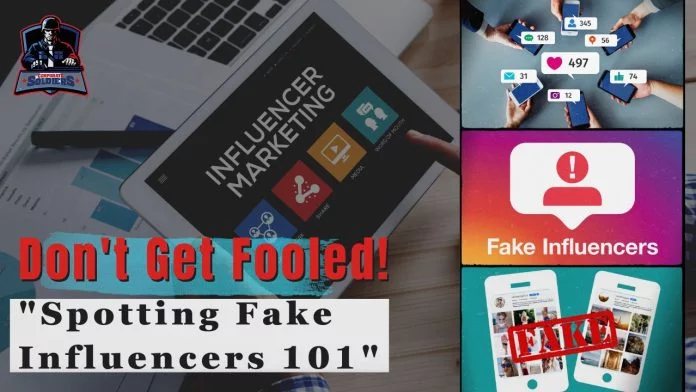Introduction:
The emergence of social media influencers in recent years has completely altered the marketing environment. Brands are aware of how influential people may help them reach their target markets and increase sales. However, with this surge in influencer marketing, a new challenge has emerged – the prevalence of fake influencers and fake followers. In this blog post, we will delve into the truth about fake followers, understand the dangers of working with fake influencers, and provide practical tips to spot and avoid them. Let’s dive in!
The Truth About Fake Followers:
Influencers are those social media personalities with big followings and apparent power that you have undoubtedly encountered. Would you believe me if I said that some of them are lying? Enter the realm of false influencers, people who use dishonest methods to deceive both brands and loyal fans. In order to create a façade of fame and authority, they purchase false followers, likes, and interaction. These fake followers are not genuine accounts but artificially generated by bots or purchased from third parties.
Because of the lack of transparency, this not only damages the credibility of the influencer marketing sector but also demoralises brands and customers. Influencers unquestionably have power, but it’s important to realise that not all of them can be relied upon.
Unmasking the Deception: Infamous Examples of Fake Followers
Fake influencers have recently become a hot topic, gaining widespread attention due to high-profile cases that have made headlines. The discovery of Devumi, a business that sold false followers, likes, and comments to social network users, was one surprising case. They deceived consumers with fake engagement using a vast collection of over 3.5 million bots, even selling startling 200 million Twitter followers.
However, the deceptive practices caught up with them, and they were shut down in 2018, marking the first time the US government punished a company for selling fake followers. Another recent bust by the Mumbai Police revealed an international ring that generated more than 500,000 fake followers for 176 profiles on well-known social media sites like Facebook, Instagram, and TikTok. With the help of these dishonest strategies, influencers were employed to dupe brands into paying for collaborations and marketing. These instances highlight the fake influencers problem’s widespread nature and its considerable effects on the social media marketing sector.
Unveiling the True Cost of Fake Influencers:
In influencer marketing, the issue of fake influencers is now pervasive and getting worse. Surprisingly, a survey by HypeAuditor discovered that 49% of Instagram influencers employed fake followers at some time in 2021, costing brands an incredible $1.3 billion in just 2019. The authenticity of the sector is in danger, and there are serious concerns about consumers’ trust in brands as a result of this worrying trend.
Working with fake influencers can be a waste of money because they don’t have real followers, which makes marketing unproductive and could harm a brand’s reputation. Furthermore, when engagement rates are artificially exaggerated by false followers, quantifying the impact of these initiatives becomes difficult, leaving firms unsure of their return on investment.
Unmasking the Pretenders: Tips for Spotting Fake Influencers:
As a brand, it is essential to distinguish genuine influencers from the pretenders. Here are
some effective tips to help you spot and avoid fake influencers:
- Know Your Influencer: Conduct thorough research on the influencer’s profile. Look for reviews and feedback from previous collaborations to gauge their authenticity.
- Check Engagement Rates: Genuine influencers typically have engagement rates between 3-6%. Suspiciously low engagement rates despite a large following may indicate fake followers.
- Analyze Their Followers: Use analytical tools to detect irregular patterns in follower growth. Be cautious of influencers with a high number of likes and comments from dubious accounts.
- Consistency in Content: Genuine influencers maintain a consistent style and voice across their social media channels. Lack of coherence in content may signal a lack of genuine investment.
- Genuine Brand Partnerships: Assess the brands the influencer collaborates with. Authentic influencers form selective and strategic partnerships that align with their niche or brand image.
Conclusion:
Influencer marketing has reshaped the way brands connect with their audiences. However, the rising popularity of this strategy has also given rise to fake influencers and fake followers. By recognizing the dangers of working with fake influencers and adopting vigilant practices, brands can protect their reputation, investments, and consumer trust. Staying informed and discerning will ensure that influencer marketing continues to be a valuable and authentic tool in reaching and engaging with target audiences.










